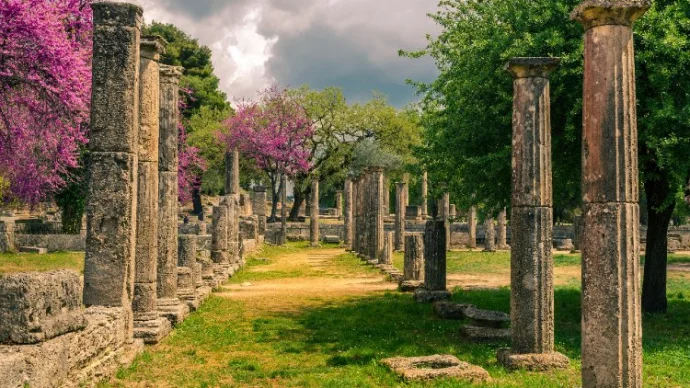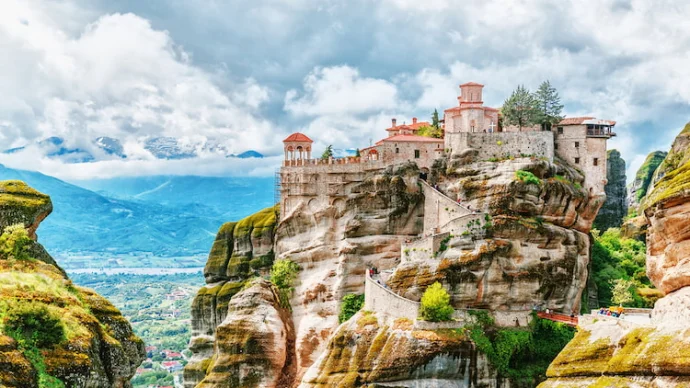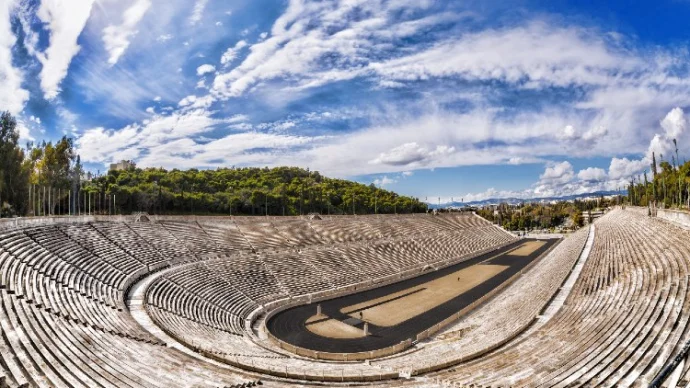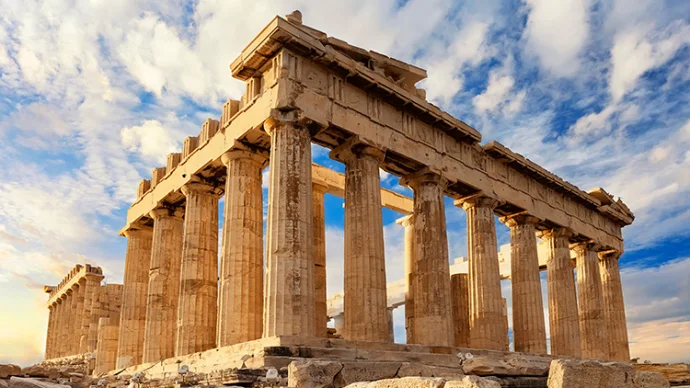
About Temple of Poseidon at Sounio
The Temple of Poseidon of Sounio is a picturesque ruin of a 5th century BC Greek temple dedicated to the deity of the sea.
History of The Temple of Poseidon
The Temple itself was constructed in the mid 5th century BC, at roughly the same time as the Parthenon and the Temple of Hephaestus in Athens. Made of marble mined from nearby Agrileza and dramatically perched on a cliff overlooking the ocean, the Temple of Poseidon of Sounio is now made up of a rectangle of restored large Doric columns. Hexastyle in its original design (6 columns in width x 13 columns in length), only 16 of the original 38 columns remain.
Activity had been occurring on the site long before the construction of this major monument, with the site also having some mythological links. Aegeus, the legendary father of Theseus, was said to have thrown himself from the cliffs above Cape Sounio when he saw his son’s ship returning from Crete hoisting black sails. Theseus and Aegeus had agreed that the former would hoist white sails on his return if he had been successful, but that his men would hoist black sails if Theseus had failed and died during his famous Minotaur mission.
Theseus forgot to change the sails’ colour, leading Aegeus to wrongly believe that his son had been killed during his quest. He consequently threw himself from the cliffs into the sea. It was Aegeus’ suicide that supposedly gave the sea its name: the Aegean Sea.
Away from mythology, the site at Sounio appears to have had religious significance since the Bronze Age. During the Archaic Period, another Temple of Poseidon had been present on top of this cliff. Built of tufa, it may well have been destroyed by the Persian King Xerxes in 480 BC, following his sacking of the Acropolis at Athens. This destruction ultimately paved the way for the building of the monumental marble temple, the remains of which you can see today.
The Temple of Poseidon today
Today, only part of the Temple remains intact, but these ruins are still a must see site for anyone touring the eastern part of mainland Greece. For truly spectacular views this partially-ruined Greek temple is hard to beat. If you can catch it at sunset, then the scene will be complete.
The Temple was designated a UNESCO World Heritage Site in 2014, as part of Ancient Lavrion.
Getting to Temple of Poseidon at Sounio
The Temple is roughly an hour out from Athens (a 70km drive), heading southwest, and there are several tour operators offering half-day trips.
Parking is available near the entrance to the Temple, but be wary that it can fill up very quickly at sunset as visitors arrive to see the Temple at its best. Between the parking and the Temple itself is a small hill that you will have to climb to reach the spectacular remains.
The Temple is roughly 300 metres from the entrance to the archaeological site.
Featured In

Ancient Greek Ruins
Immerse yourself in classical history by stepping into the world of Ancient Greece. Here's our pick of 10 essential sites to visit.

Greece Historic Sites
Alongside its contributions to philosophy, astrology, and medicine, Greece's sites from classical antiquity have stood the test of time. Here are 10 must-see sites for any visiting history enthusiast.

Athens Top 10
Athens: the birthplace of Western civilisation. Known for its expressive architecture, striking ruins, and picturesque landscape, there are a number of essential sites for any visitor to see.

Greek Temples
The ultimate guide to the very best Greek temples in the world, from Agrigento to Paestum and more, includes an interactive map surviving temples from Ancient Greece.




















